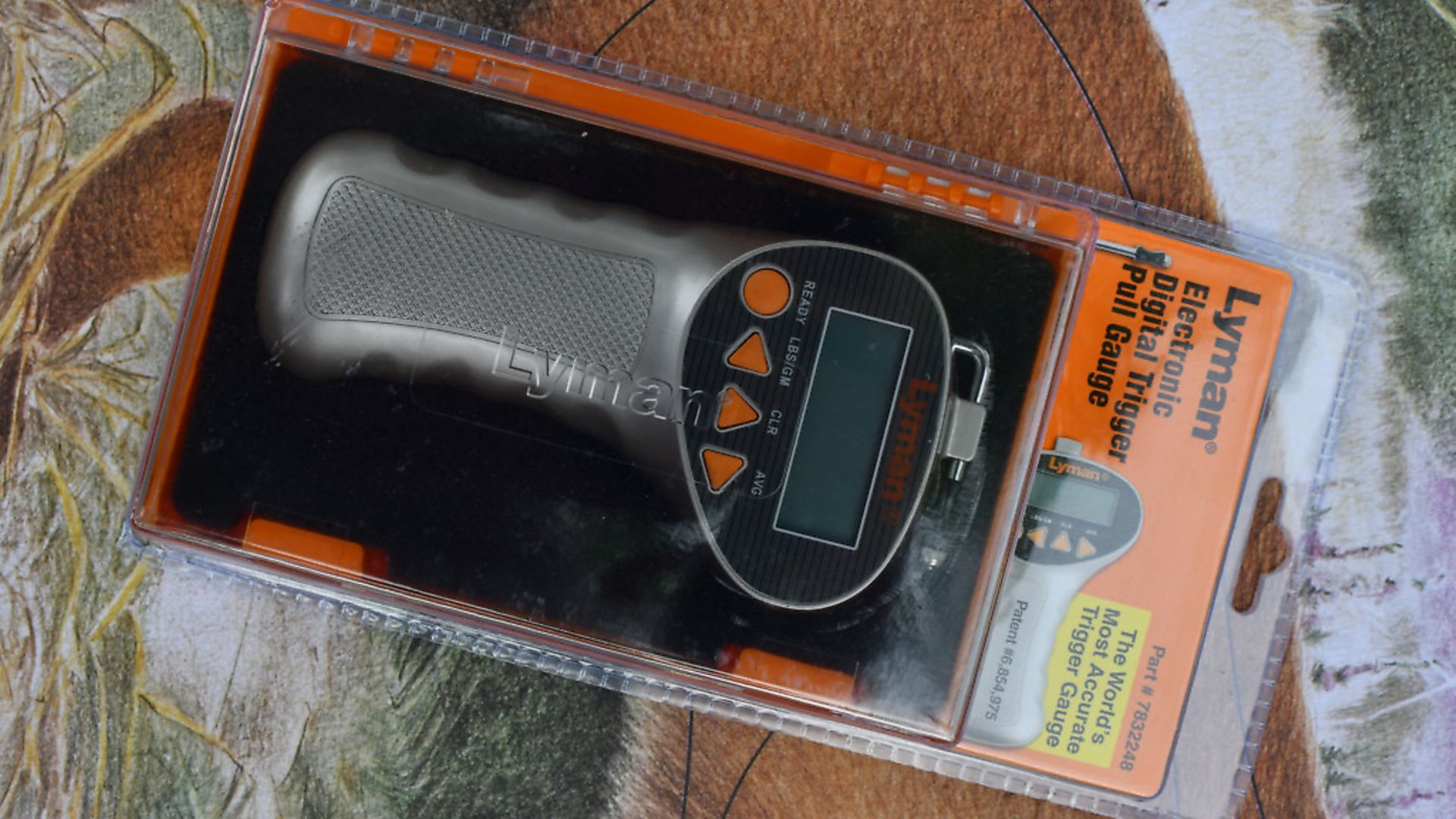Chris Parkin puts the Lyman Digital Trigger Pull Gauge to the test and finds it to be a nifty little device that is perfect for fine tuning his own rifles
 credit: Archant
credit: Archant
FOR: Neat compact and easy to use; Sturdy storage case; Accurate results
AGAINST: No drawbacks at all
VERDICT: Not necessarily a tool for everyone but no shop or ‘smith should be without one
RRP: £69.50
CONTACT
Hannam’s Reloading Ltd www.hannamsreloading.com 01977 681 639
 credit: Archant
credit: Archant
IN DEPTH
Accurately testing or adjusting triggers, whether for initial comparison or deeper technical development, is a delicate and precise subject. With modern engineering, the improvement of tolerances on factory rifles has allowed finer adjustment of sears and breaking pressure. A rifle’s trigger is one of the first items to draw criticism and a difference in feel alone can disguise the actual force and consistency, so this tool from Lyman will at least separate these two factors, with clearly visible results.
Crack open the packaging and everything including two AA batteries is supplied – fitting them takes seconds and then the unit is ready. The roller hook draws out of the body and can be clicked into four rotational positions (to suit different stock shapes/ease of access to the trigger blade within its guard) and will work with almost any rifle, shotgun, airgun or air pistol.
The measuring range is from 1oz/2.8g to 12lb/5.4kg with ‘resolution’ or sensitivity of ± 0.1oz between 0-5lb (0.5oz above this) or in metric, ± 2g between a desirable 0-2.2kg pull weight. Operation is fast, with a gentle draw on the unit activating the state-of-the-art strain gauge technology, which allows for the 2g accuracy with further maximum test weight of 5.4kg (which is beyond what most shooters would ever need).
 credit: Archant
credit: Archant
I test a lot of guns, and I know that trigger weight is of huge interest to readers and buyers, so with the ability to accurately measure an average reading for 10 pulls, there is no cheating the unit if physical linear pull on the handset operation is consistent. A poor trigger will easily be shown to be inconsistent in weight if not actual feel.
Contrary to this, the first rifle I used the Lyman to measure was incredibly consistent, showing single-figure extreme variation (in grams) with 10 operations averaging 383g. All you do is select your unit and press the ‘ready’ button, before hooking the roller around the trigger – of course, only do this after checking the firearm is not loaded (although I will often test a rifle with dummy ammo or a spent shell in the chamber to fully replicate bolt-face pressure and its consequent position on the sear).
The gauge will display and hold the exact trigger pull weight until the next press of the ‘ready’ button or it will shut down after a few minutes to save the batteries.
 credit: Archant
credit: Archant